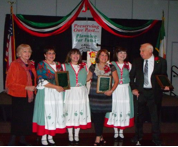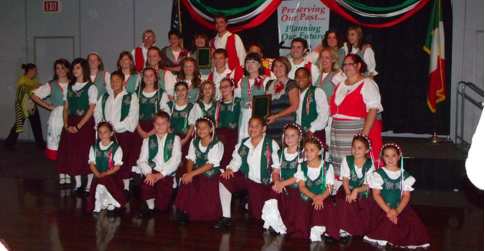A Christmas Adventure in Little Italy
 It’s the day before Christmas, and Jimmy and his best friend—his dog, Blackie—are visiting Nonna, Jimmy’s grandma, in her neighborhood called Little Italy. Jimmy loves to visit with Nonna, especially when he can help her make biscotti. After they finish their baking, Jimmy, Nonna, and Blackie set out together on the wintry day to take packages of the freshly baked biscotti to St. Michael the Archangel Church, where the cookies will be given to poor families on Christmas Eve. But as they leave the church, a bus making a sudden stop startles Blackie, and the little dog runs off through the neighborhood. All too soon, Jimmy realizes that Blackie is lost. Even though Jimmy and Nonna search everywhere, the quickly falling snow covers up Blackie’s paw prints, making it impossible to follow him. Will Jimmy’s Christmas be a sad one without his best friend?
It’s the day before Christmas, and Jimmy and his best friend—his dog, Blackie—are visiting Nonna, Jimmy’s grandma, in her neighborhood called Little Italy. Jimmy loves to visit with Nonna, especially when he can help her make biscotti. After they finish their baking, Jimmy, Nonna, and Blackie set out together on the wintry day to take packages of the freshly baked biscotti to St. Michael the Archangel Church, where the cookies will be given to poor families on Christmas Eve. But as they leave the church, a bus making a sudden stop startles Blackie, and the little dog runs off through the neighborhood. All too soon, Jimmy realizes that Blackie is lost. Even though Jimmy and Nonna search everywhere, the quickly falling snow covers up Blackie’s paw prints, making it impossible to follow him. Will Jimmy’s Christmas be a sad one without his best friend?
A Christmas Adventure in Little Italy is a heartwarming tale of a boy and his dog, set against the backdrop of a 1950s-era Italian neighborhood. The endearing and evocative images and child-friendly narrator’s voice will enchant young readers (and listeners), transporting them to a time gone by—a time of simple pleasures and special relationships. The inclusion of Nonna’s biscotti recipe at the end of the book—a real taste of Little Italy—is an added treat that children and adults alike will love. A portion of the proceeds from the sale of this book will be donated to the Kathleen Muth Reading Center at Chapman University. For more information, please visit www.chapman.edu.
To buy the book from the author, go to <http://www.achristmasadventure.com/>. The book is also available through amazon.com or Barnes & Noble.

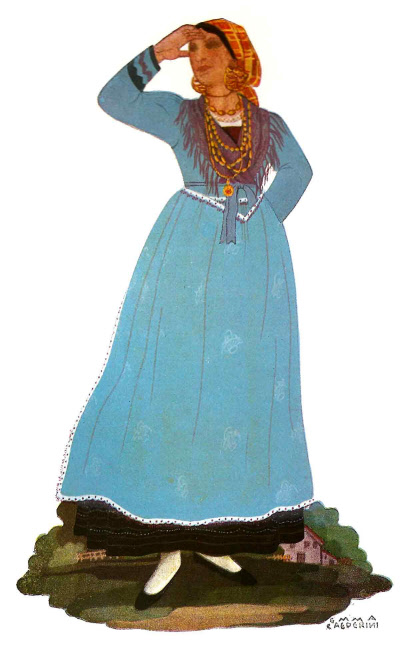


 Unfortunately we all know that the speed of modern life can make it difficult to appreciate and give proper due to the old traditions and know-how of cabinet makers, inlayers, embroiderers, upholsterers, restorers, ceramicists, and shoemakers, among others. Artisans, their traditional workshops, and thus a small piece of history are unfortunately slowly disappearing throughout Italy.
Unfortunately we all know that the speed of modern life can make it difficult to appreciate and give proper due to the old traditions and know-how of cabinet makers, inlayers, embroiderers, upholsterers, restorers, ceramicists, and shoemakers, among others. Artisans, their traditional workshops, and thus a small piece of history are unfortunately slowly disappearing throughout Italy. Well, rather than lament the state of affairs, our new friends at
Well, rather than lament the state of affairs, our new friends at 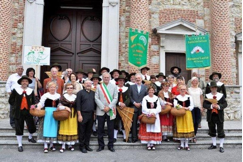
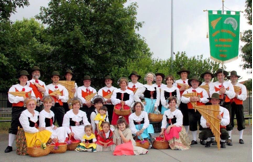
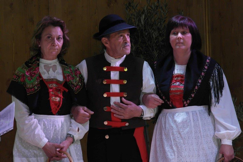

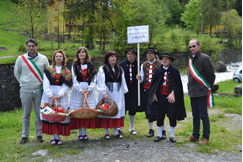

 It’s the day before Christmas, and Jimmy and his best friend—his dog, Blackie—are visiting Nonna, Jimmy’s grandma, in her neighborhood called Little Italy. Jimmy loves to visit with Nonna, especially when he can help her make biscotti. After they finish their baking, Jimmy, Nonna, and Blackie set out together on the wintry day to take packages of the freshly baked biscotti to St. Michael the Archangel Church, where the cookies will be given to poor families on Christmas Eve. But as they leave the church, a bus making a sudden stop startles Blackie, and the little dog runs off through the neighborhood. All too soon, Jimmy realizes that Blackie is lost. Even though Jimmy and Nonna search everywhere, the quickly falling snow covers up Blackie’s paw prints, making it impossible to follow him. Will Jimmy’s Christmas be a sad one without his best friend?
It’s the day before Christmas, and Jimmy and his best friend—his dog, Blackie—are visiting Nonna, Jimmy’s grandma, in her neighborhood called Little Italy. Jimmy loves to visit with Nonna, especially when he can help her make biscotti. After they finish their baking, Jimmy, Nonna, and Blackie set out together on the wintry day to take packages of the freshly baked biscotti to St. Michael the Archangel Church, where the cookies will be given to poor families on Christmas Eve. But as they leave the church, a bus making a sudden stop startles Blackie, and the little dog runs off through the neighborhood. All too soon, Jimmy realizes that Blackie is lost. Even though Jimmy and Nonna search everywhere, the quickly falling snow covers up Blackie’s paw prints, making it impossible to follow him. Will Jimmy’s Christmas be a sad one without his best friend?